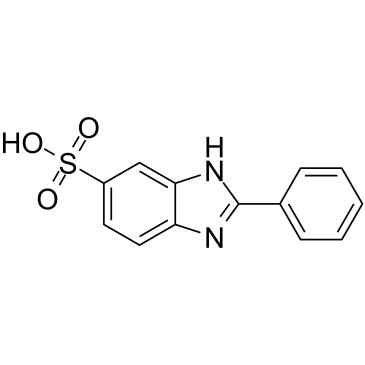Occurrence of xenobiotics in gray water and removal in three biological treatment systems.
Lucía Hernández Leal, Niina Vieno, Hardy Temmink, Grietje Zeeman, Cees J N Buisman
Index: Environ. Sci. Technol. 44(17) , 6835-42, (2010)
Full Text: HTML
Abstract
Eighteen selected xenobiotics related to personal care and household chemicals (UV-filters, fragrances, preservatives, biocides, surfactants) were measured in gray water from 32 houses and in effluents of three different biological treatment systems (aerobic, anaerobic, and combined anaerobic+aerobic). All selected xenobiotics were detected in gray water samples in the low microg L(-1) range. Generally, lower concentrations were measured after biological treatment and removal efficiencies were higher under aerobic conditions than under anaerobic conditions. However, most of the xenobiotics were still detected in biologically treated gray water. The most persistent compounds were the fragrance tonalide and the UV-filters 2-phenyl-5-benzimidazolesulfonic acid and ethylhexyl methoxycinnamate. Estimated estrogenic potential of the effluent ranged between 0.07 and 0.72 ng L(-1) of 17beta-estradiol equivalents. Depending on the application of the effluent and its environmental risk, physical-chemical processes might be required to increase the removal efficiency of these compounds from gray water.
Related Compounds
| Structure | Name/CAS No. | Molecular Formula | Articles |
|---|---|---|---|
 |
2-Phenylbenzimidazole-5-sulfonic acid
CAS:27503-81-7 |
C13H10N2O3S |
|
Sodium montmorillonite/amine-containing drugs complexes: new...
2015-01-01 [PLoS ONE 10 , e0121110, (2015)] |
|
Adverse reactions to sunscreen agents: epidemiology, respons...
2014-01-01 [Dermatitis 25(6) , 289-326, (2014)] |
|
Removal of micropollutants from aerobically treated grey wat...
2011-04-01 [Water Res. 45(9) , 2887-96, (2011)] |
|
Application of a biomimetic sensor based on iron phthalocyan...
[J. Braz. Chem. Soc. 21(7) , 1377-83, (2010)] |